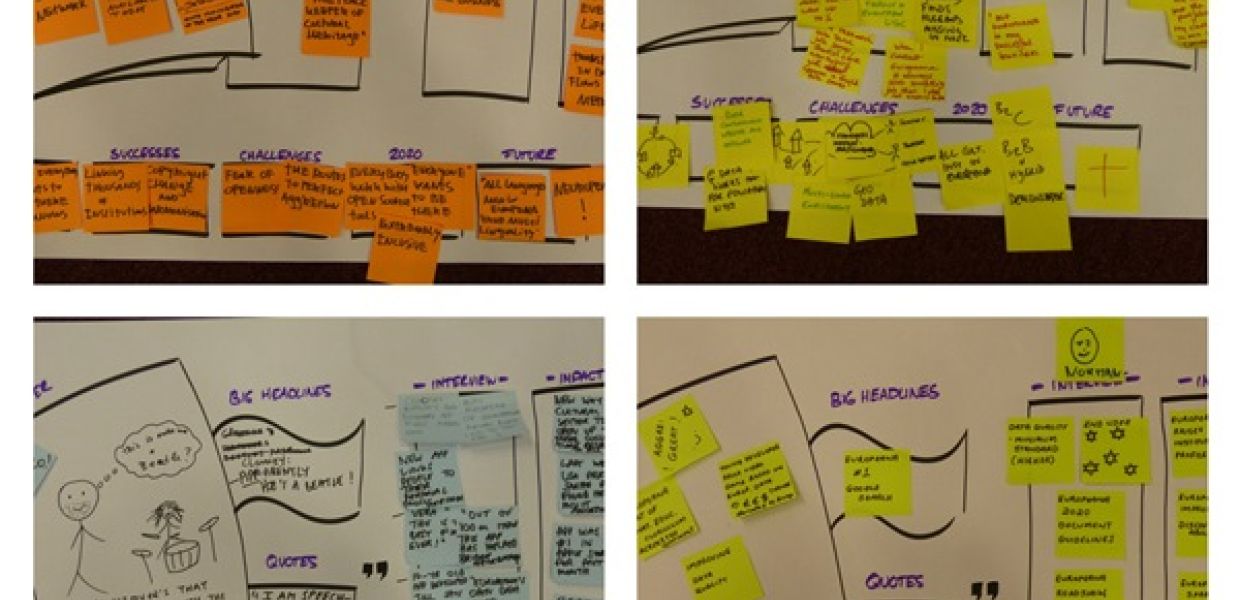What will Europeana aggregation look like in 2020?

On Thursday 14 November, the Europeana Network came together for the second of four workshops about the future of Europeana. This time we addressed the topic of aggregation of cultural data and content - that is, how Europeana collects and presents the vast amount of information that comes from thousands of Europeana heritage organisations. If we do it right, so our participants told us, we could even envisage a scenario in which we make it possible to 3D-print the Elgin Marbles so the originals can be sent back to Greece! Who was there? We welcomed national aggregators such as the German Digital Library and Erfgoedplus.be, domain aggregators such as APEx and EUscreenXL, and aggregation technology experts.
Europeana today
We asked the group to tell us what they think Europeana’s strengths and weaknesses are. Here are the top responses when it comes to aggregation:
Strengths
- The amount of data
- The network of cultural heritage institutions
- The work on standardisation on a technical and legal level
- The diversity of the available data.
Weaknesses
- Average quality of the metadata and therefore the discoverability of the content
- Too much focus on quantity
- No clear value for cultural institutions
- No direct access to content
So that's Europeana now, but how do we want it to look in future? One thing was clear for all participants - in order to become the number one place for trusted cultural heritage, metadata quality needs to improve. By adding thumbnails, persistent links, good descriptions and clear rights statements, the end-user experience will improve drastically.
Four potential aggregation models
Four different scenarios were created with various roles for Europeana. 
Each scenario - Exclusive, Inclusive, National Aggregator Only and Cloud - is deliberately quite extreme to force people to think about both positive and negative aspects of it.
In the 'Cloud' model, Europeana would get rid of aggregators as we know them today, and focus only on connecting institutions to a cloud based infrastructure. This would make the process of publishing and updating data a lot easier and quicker. Once the infrastructure is up, it wouldbe fairly cheap to maintain and Europeana would help institutions convert their data to linked data to easily connect them with others. However, getting to this model will require huge investment and there are still many uncertainties. Also, National Aggregators currently do more than just aggregate. They are key in understanding the local situation and making connections with the cultural institutions. This is something Europeana would never be able to do on its own.
Concluding remarks
The aggregation infrastructure is one of the most difficult, but also one of the most essential, things to do right. Before Europeana can bring the material of more than 2,000 institutions to a wider audience, the data must be of high quality so the material can actually be found and used for meaningful purposes. The aggregation model as it is now has worked reasonably well, but it is difficult to scale up. So how do we grow without sacrificing quality? This is something we'll be thinking about over the next few months as we work on the Europeana Strategic Plan 2015-2020. We have two more workshops to go, so stay tuned. And have a look at the Strategy Engine Room for more results and outcomes. We very much invite you to join the discussion and help us set the route to 2020. Allez!
